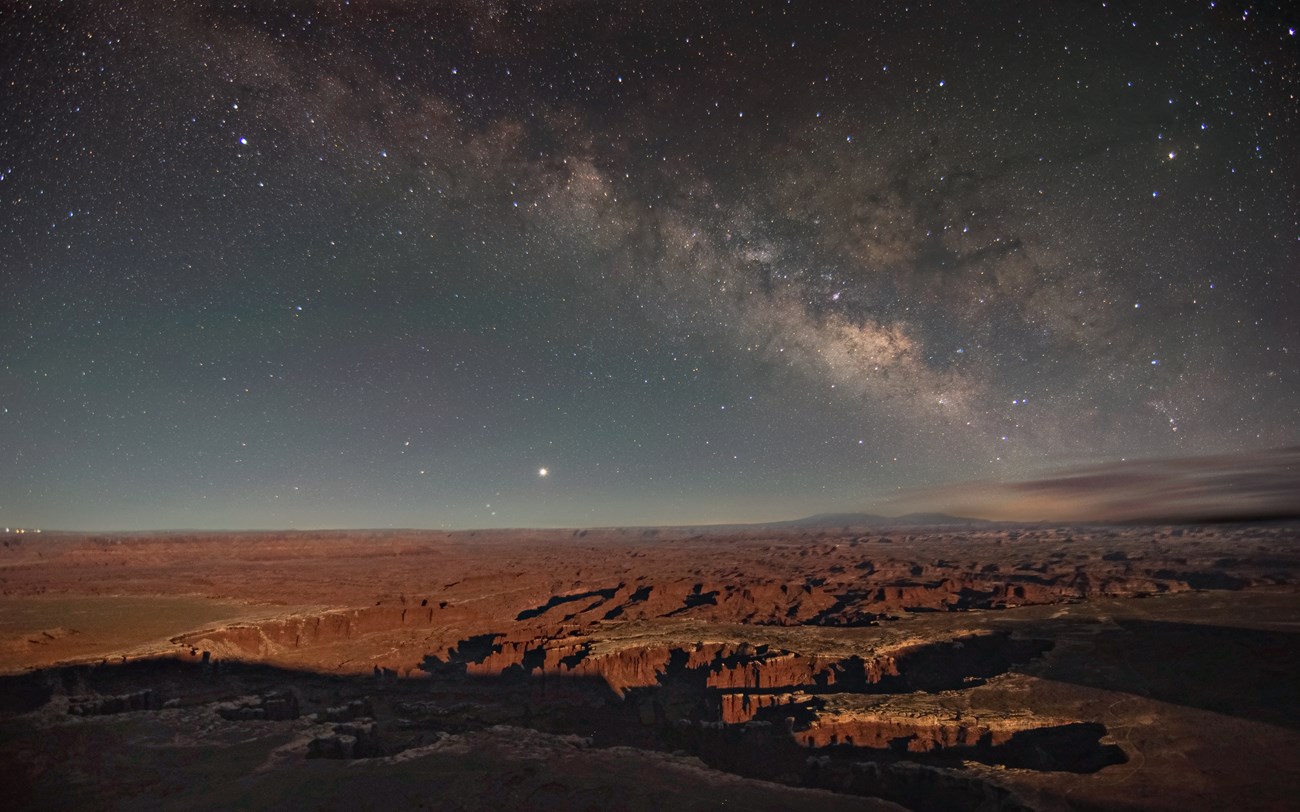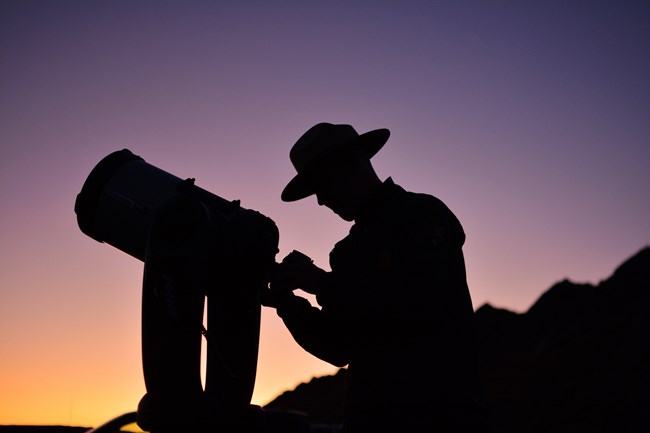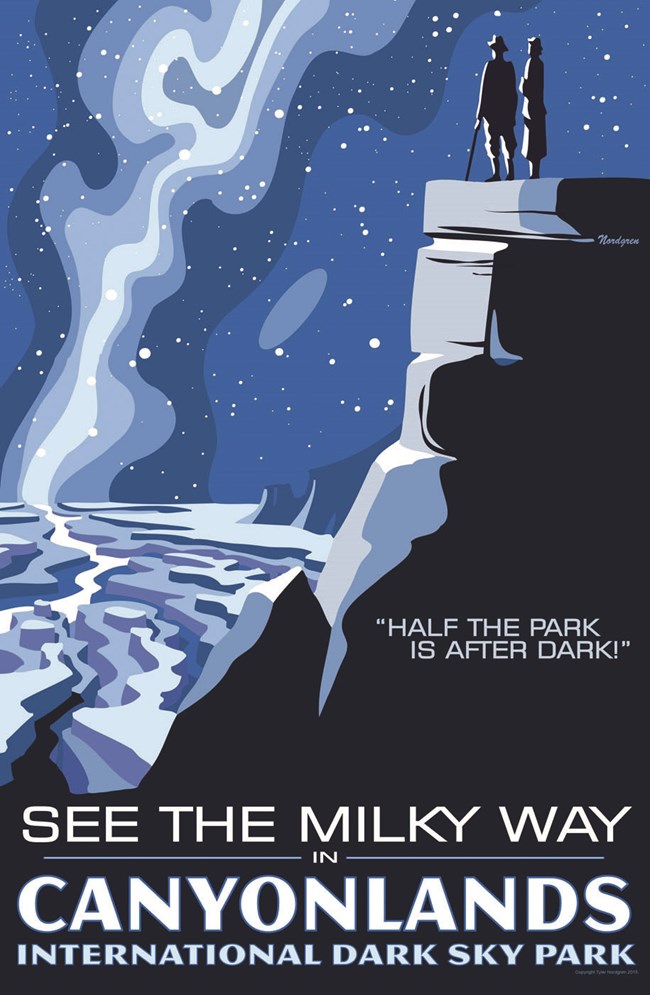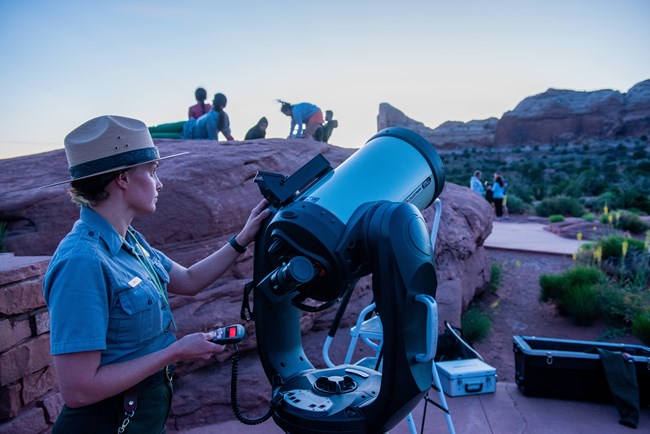
NPS/Rhodes Smartt The national parks and monuments of the Colorado Plateau have long been popular destinations for travelers. In addition to their stunning landscapes and rich cultural history, these areas share another resource: some of the darkest skies remaining in the contiguous 48 United States. The utter dark of a moonless night in Canyonlands surprises many visitors. As few as one in ten Americans live in areas where they can see the estimated 2,500 stars that should be visible under normal conditions. In many cities, the night sky is completely obscured by the glow of urban settlement. At Canyonlands, the naked eye is sufficient to witness a wealth of stars. Under the right conditions, common binoculars may even reveal the rings of Saturn. Canyonlands preserves a wealth of resources. Many, like natural darkness, have become more significant as they become increasingly rare outside the park. 
NPS/Kat Connelly Stargazing TipsPlan ahead & check conditions. Give yourself time. Use a red light. Bring a star chart. 
2026 Night Sky Almanac
Equinoxes and Solstices
Meteor Showers (Peaks)

NPS/Veronica Verdin Stargaze with a RangerCheck out this year's Southeast Utah Astrofest! Use NASA's Spot the Station app to receive notifications when the International Space Station is visible. | ||||||||||||||||||||||||||||||||||||||||||
Last updated: December 16, 2025
